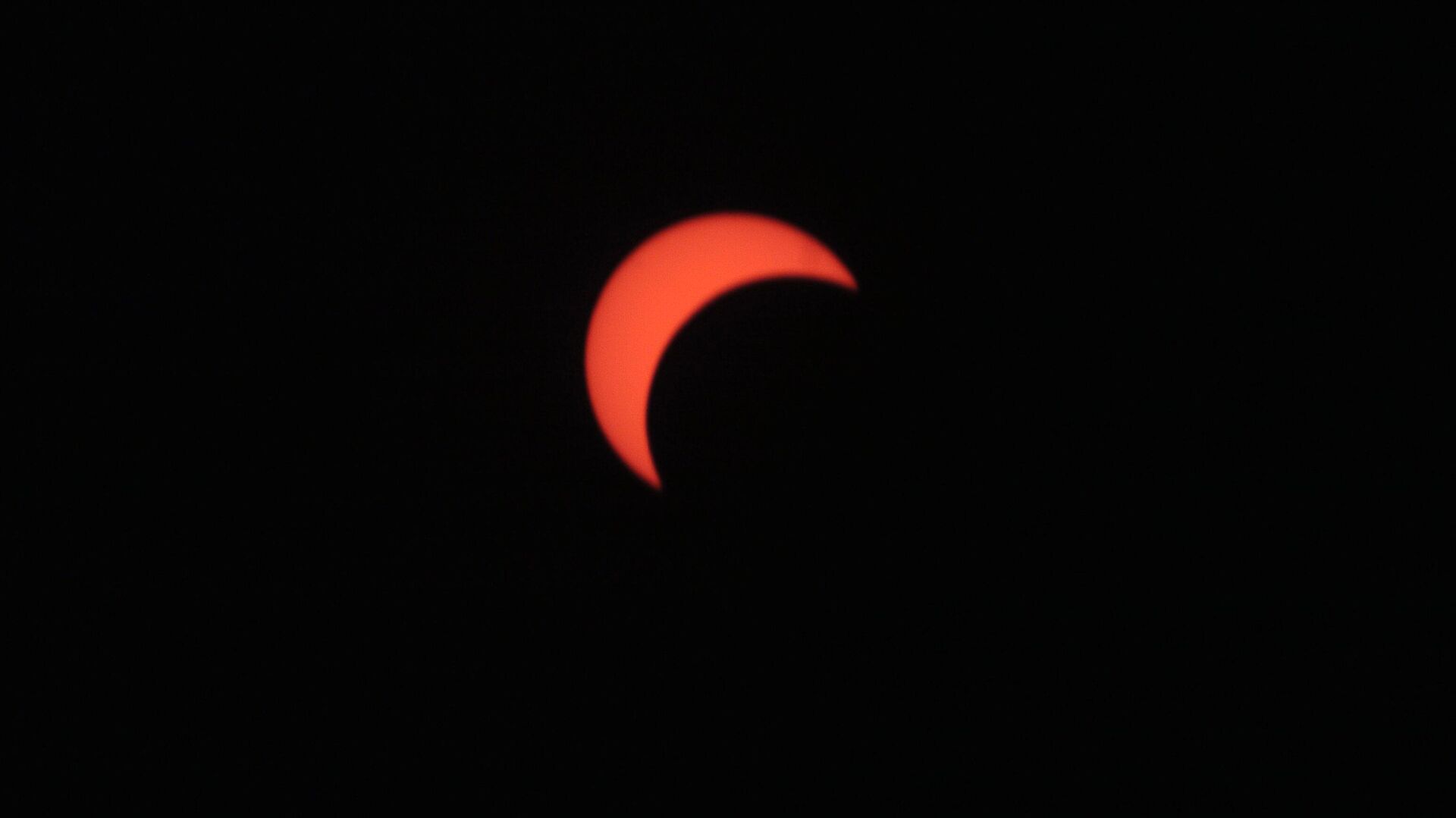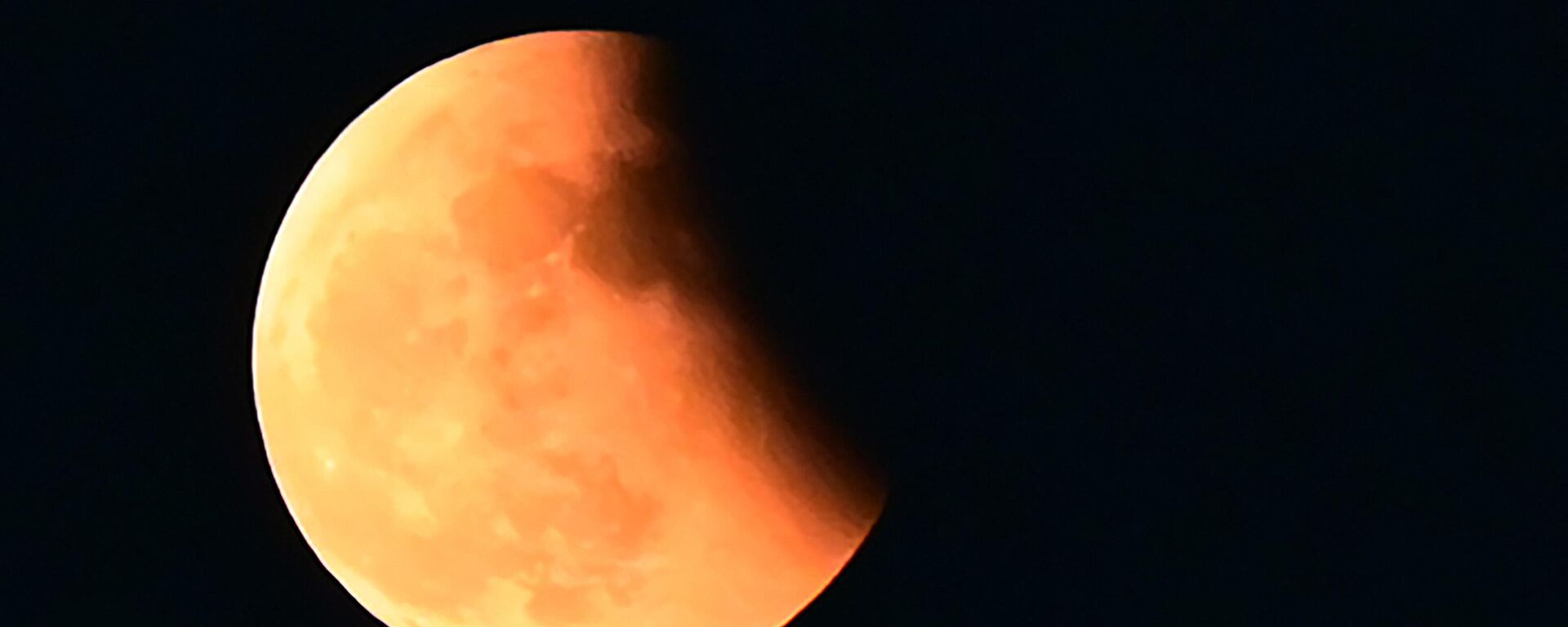https://sputniknews.in/20230419/what-is-a-rare-hybrid-solar-eclipse-1611945.html
What is a Rare 'Hybrid' Solar Eclipse?
What is a Rare 'Hybrid' Solar Eclipse?
Sputnik India
Earth's habitants will be able to see a rare hybrid solar eclipse, or surya grahan, on April 20. 19.04.2023, Sputnik India
2023-04-19T16:18+0530
2023-04-19T16:18+0530
2023-04-19T16:18+0530
solar eclipse
vedic astrology
indo-pacific
southeast asia
the philippines
australia
https://cdn1.img.sputniknews.in/img/07e7/04/13/1612115_0:154:3092:1893_1920x0_80_0_0_aedff3b2b4eca164f26b042c65f4bef8.jpg
A solar eclipse occurs when the Moon passes in front of the Sun, blocking its light from reaching Earth's surface.A hybrid solar eclipse, or partial solar eclipse, however, is a rare occurrence, in which the eclipse shifts between a total and an annular solar eclipse.This means that at some locations on Earth, it will appear as a total solar eclipse, while at other locations it will appear as an annular solar eclipse.How Often Do Hybrid Solar Eclipses Occur?The reason for the variation in solar eclipses is due to the distance between the Earth and the Moon. When the Moon is at its closest point to Earth, known as perigee, it can completely cover the Sun during a solar eclipse, resulting in a total solar eclipse. However, when the Moon is at its furthest point from Earth, known as apogee, it can't completely cover the Sun, creating an annular solar eclipse.What makes a hybrid solar eclipse rare is the specific geometry that's required for it to occur. The alignment of the Sun, Moon, and Earth must be very precise, and the Moon's distance from the Earth must be just right, meaning that only about 5% of solar eclipses are hybrid. As a result, hybrid solar eclipses occur only a few times a century, and they're only visible from a narrow strip of land on Earth. Despite being rare events, hybrid solar eclipses have been observed throughout history. The first known observation was in September 935 A.D in Baghdad, as recorded by the Arab astronomer al-Muntazar. Other notable hybrid solar eclipses throughout history include the November 14, 1834 eclipse in the eastern United States, the May 9, 1947 eclipse over parts of Canada and Siberia, and the November 3, 2013 eclipse in the Atlantic Ocean.Where to Watch Hybrid Solar Eclipse on April 20On Thursday, April 20, the moon will block out the sun. People in Australia, Timor-Leste and Indonesia (West Papua and Papua) will be able to watch the event. A partial solar eclipse will be also visible in Southeast Asia, East Indies, Australia, the Philippines and New Zealand. The partial eclipse begins at 1:34 UTC and ends at 6:59 UTC. The central (hybrid) eclipse begins at 2:37 UTC and ends at 5:56 UTC.Note that for Americans, this eclipse takes place on Wednesday, but, unfortunetely, it won't be visible there.The last hybrid solar eclipse happened in 2013, and the next will occur in 2031. After that, skywatchers will have to wait until March 23, 2164 (!) to witness this majectic event.
https://sputniknews.in/20230321/why-indian-vedic-astrology-is-still-in-high-demand-after-5000-years-1239804.html
indo-pacific
southeast asia
the philippines
australia
Sputnik India
feedback.hindi@sputniknews.com
+74956456601
MIA „Rossiya Segodnya“
2023
Sputnik India
feedback.hindi@sputniknews.com
+74956456601
MIA „Rossiya Segodnya“
News
en_IN
Sputnik India
feedback.hindi@sputniknews.com
+74956456601
MIA „Rossiya Segodnya“
Sputnik India
feedback.hindi@sputniknews.com
+74956456601
MIA „Rossiya Segodnya“
what is the best way to watch a solar eclipse? what is a rare hybrid solar eclipse? where can you see the hybrid solar eclipse? who can see the hybrid solar eclipse? how can i watch a solar eclipse with water? is it ok to look at a solar eclipse? what is the rarest eclipse ever? how often is a rare eclipse? how rare is a luna eclipse? surya grahan in india
what is the best way to watch a solar eclipse? what is a rare hybrid solar eclipse? where can you see the hybrid solar eclipse? who can see the hybrid solar eclipse? how can i watch a solar eclipse with water? is it ok to look at a solar eclipse? what is the rarest eclipse ever? how often is a rare eclipse? how rare is a luna eclipse? surya grahan in india
What is a Rare 'Hybrid' Solar Eclipse?
Earth's habitants will be able to see a rare hybrid solar eclipse, or surya grahan, on April 20.
A solar eclipse occurs when the Moon passes in front of the Sun, blocking its light from reaching Earth's surface.
A hybrid solar eclipse, or partial solar eclipse, however, is a rare occurrence, in which the eclipse shifts between a total and an annular solar eclipse.
This means that at some locations on Earth, it will appear as a total solar eclipse, while at other locations it will appear as an annular solar eclipse.
How Often Do Hybrid Solar Eclipses Occur?
The reason for the variation in solar eclipses is due to the distance between the Earth and the Moon.
When the Moon is at its closest point to Earth, known as perigee, it can completely cover the Sun during a solar eclipse, resulting in a total solar eclipse. However, when the Moon is at its furthest point from Earth, known as apogee, it can't completely cover the Sun, creating an annular solar eclipse.
What makes a hybrid solar eclipse rare is the specific geometry that's required for it to occur. The alignment of the Sun, Moon, and Earth must be very precise, and the Moon's distance from the Earth must be just right, meaning that only about 5% of solar eclipses are hybrid.
As a result, hybrid solar eclipses occur only a few times a century, and they're only visible from a narrow strip of land on Earth.
Despite being rare events, hybrid solar eclipses have been observed throughout history. The first known observation was in September 935 A.D in Baghdad, as recorded by the Arab astronomer al-Muntazar. Other notable hybrid solar eclipses throughout history include the November 14, 1834 eclipse in the eastern United States, the May 9, 1947 eclipse over parts of Canada and Siberia, and the November 3, 2013 eclipse in the Atlantic Ocean.
Where to Watch Hybrid Solar Eclipse on April 20
On Thursday, April 20, the moon will block out the sun.
People in Australia, Timor-Leste and Indonesia (West Papua and Papua) will be able to watch the event. A partial solar eclipse will be also visible in Southeast Asia, East Indies, Australia, the Philippines and New Zealand.
The partial eclipse begins at 1:34 UTC and ends at 6:59 UTC. The central (hybrid) eclipse begins at 2:37 UTC and ends at 5:56 UTC.
Note that for Americans, this eclipse takes place on Wednesday, but, unfortunetely, it won't be visible there.
The last hybrid solar eclipse happened in 2013, and the next will occur in 2031. After that, skywatchers will have to wait until March 23, 2164 (!) to witness this majectic event.


